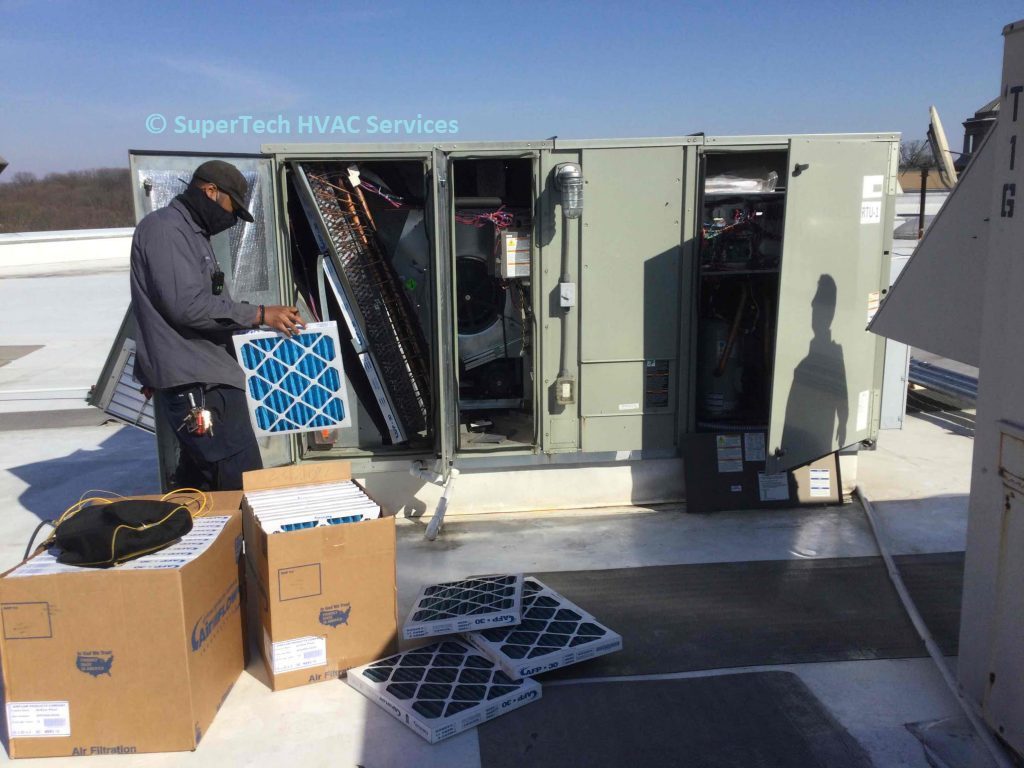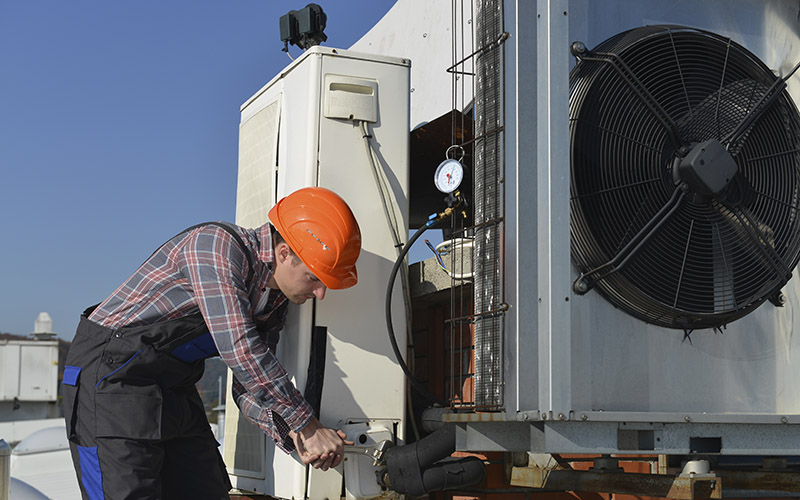Comparing Costs of Repair vs Full furnace replacement
Wiki Article
Just How a Heatpump and Furnace Collaborate to Maximize Your Home's Heating Effectiveness
Comprehending just how a heatpump and furnace job with each other is necessary for home owners looking for reliable heating remedies. Each system has its staminas, offering a well balanced strategy to home comfort. The warmth pump succeeds in moderate temperature levels, while the furnace supplies quick heat during severe cold. This harmony not just reduces power costs yet likewise enhances the lifespan of both appliances. What elements influence this partnership, and exactly how can home owners maximize their advantages?Recognizing Warm Pumps: Just How They Work
Although lots of individuals may be unfamiliar with their inner functions, heatpump play a vital duty in modern heating systems. These gadgets run by transferring heat from one place to one more, using the principles of thermodynamics. In colder months, a heat pump removes heat from the outside air, ground, or water, and transfers it indoors to warm up the space. Alternatively, throughout warmer months, it can turn around the process, acting as an air conditioning unit by eliminating warmth from inside to the outside.Heat pumps consist of an evaporator, compressor, expansion, and condenser shutoff. The refrigerant within the system absorbs warmth as it vaporizes at reduced temperatures and pressures. The compressor after that raises the pressure and temperature level of the cooling agent, permitting it to release warm as it condenses. This reliable process can substantially minimize energy consumption compared to typical home heating techniques, making heat pumps a sustainable choice for climate control in homes.The Duty of Heating Systems in Home Home Heating
Heating systems play an important function in home heating by giving a dependable resource of warmth during the cooler months. They run by creating warmth with combustion or electrical resistance, distributing it throughout the home through ducts or radiant systems. The performance of a heater is often gauged by its Annual Fuel Usage Effectiveness (AFUE) score, which indicates how successfully the device transforms gas right into heat.Furnaces can make use of different power sources, including natural gas, gas, power, or oil, enabling home owners to choose one of the most appropriate option for their demands. Unlike warmth pumps, which might struggle in severe cool, furnaces keep consistent performance, making certain that interior temperature levels stay comfortable despite outside problems. Furthermore, modern heaters frequently come equipped with advanced modern technology, such as variable-speed blowers and clever thermostats, enhancing their effectiveness and responsiveness. This adaptability makes heaters a crucial component in all-inclusive home heating techniques.
Advantages of Making Use Of Both Solutions Together
Incorporating the staminas of both heating systems and heatpump can lead to a much more effective and reliable home heating option. Using both systems permits property owners to make use of the warm pump's energy efficiency throughout milder temperature levels while counting on the heating system for even more severe cold problems. This twin method can substantially decrease energy prices, as heat pumps take in much less electricity than typical home heating techniques when temperatures are moderate.Additionally, utilizing both systems with each other can boost comfort degrees in the home. Heatpump can provide constant, also home heating, while furnaces can swiftly increase ambient temperatures when required. The assimilation of both systems can prolong the life-span of equipment by reducing wear and tear on each system, as they share the workload. Ultimately, homeowners can take pleasure in a well balanced, cost-effective heating solution that changes seamlessly to differing weather, making sure a cozy and welcoming home throughout the winter season.Just How Warm Pumps and Furnaces Complement Each Various Other
When home owners integrate heatpump and heaters, they create a complementary heating unit that makes the most of performance and comfort. Heatpump run by moving warm from the outdoors air or ground, making them very efficient in moderate environments. They stand out during milder temperature levels, providing cost-efficient home heating. On the other hand, heaters create heat via combustion or electrical resistance, providing strong, instant heat during severe cool conditions.The mix of these two systems enables for vibrant adjustments based on temperature level fluctuations. During warmer months or milder winter season days, the warmth pump can take the lead, conserving energy and minimizing prices. As temperature levels drop, the furnace can effortlessly involve, making certain consistent heat throughout the home. This harmony not just maximizes energy use but likewise boosts the lifespan of both systems, as each system operates within its ideal efficiency variety. With each other, they develop a well balanced setting that adapts to differing climate demands.
Maximizing Performance: Tips for Homeowners
Property owners can boost their heating effectiveness via a number of sensible strategies. Establishing a normal upkeep schedule, integrating wise thermostat innovation, and implementing reliable insulation and sealing solutions are key actions. These actions not only enhance convenience yet likewise decrease power costs.Normal Maintenance Schedule
To ensure optimal home heating efficiency, developing a routine upkeep routine is necessary for any home. Homeowners should prioritize regular evaluations of both heatpump and heating systems to establish peak efficiency. This includes altering air filters each to 3 months, as clogged filters can substantially minimize efficiency. Furthermore, scheduling expert upkeep a minimum of annually allows professionals to identify and resolve prospective issues before they intensify. Property owners should also cleanse the warm pump's outside system to discover this protect against particles accumulation that can impede air flow. By adhering to a normal upkeep schedule, home owners not only improve their heating unit' performance but likewise prolong their lifespan, leading to higher convenience and minimized power costs throughout the colder months.Smart Thermostat Assimilation
Incorporating a clever thermostat right into a home heating system can considerably boost energy efficiency, specifically as it enables specific control over temperature setups. These devices can learn the house owner's schedule and preferences, immediately adjusting the temperature level to maximize convenience while reducing power usage. They can decrease home heating throughout times when the home is empty, lowering unneeded intake. Several clever thermostats also offer real-time power usage information, making it possible for homeowners to make informed decisions regarding their heating practices. In addition, remote access through smart device apps allows users to change setups from anywhere, making sure the home is cozy upon return. Overall, clever thermostat assimilation not just improves comfort but substantially contributes to power cost savings and effectiveness.
Insulation and Securing Solutions
Smart thermostats play a critical role in power effectiveness, yet their performance can be greatly enhanced by appropriate insulation and securing options. House owners should prioritize protecting floors, wall surfaces, and attics to minimize warm loss. Premium insulation materials, such as spray foam or fiberglass, can greatly enhance thermal resistance. In addition, sealing spaces around air ducts, doors, and windows stops chilly air infiltration and warmth retreat. Weatherstripping and caulking are reliable techniques for dealing with these leakages - ductless mini splits. Routine assessments for air leakages, along with the use of blower door tests, can assist identify issue areas. By buying insulation and sealing, homeowners can optimize the performance of their home heating systems, inevitably causing minimized energy intake and reduced energy expensesTypical Misconceptions Concerning Warm Pumps and Furnaces
What mistaken beliefs border heat pumps and heating systems? Many people erroneously believe that heatpump are ineffective in cooler climates. In truth, modern-day heatpump are developed to run effectively even in reduced temperatures, supplying trustworthy home heating throughout wintertime. Another common myth is that heating systems are constantly much more reliable than warm pumps. However, this relies on the certain power sources and effectiveness scores of the devices in inquiry. Some might also believe that utilizing both systems concurrently is unneeded, yet in truth, this combination can enhance heating performance, especially during severe weather conditions. Furthermore, individuals frequently think that heatpump need consistent maintenance, when in reality, they have comparable upkeep requires to typical heating unit. By debunking these myths, property owners can make more enlightened choices concerning their heating choices, ultimately bring about enhanced convenience and energy effectiveness in their homes.Maintenance Factors To Consider for Combined Equipments

Frequently Asked Inquiries
from this sourceCan Warm Pumps Work Effectively in Very Cold Climates?
Heat pumps can have a hard time in exceptionally cold environments due to decreased effectiveness and warm removal constraints. Nevertheless, improvements in modern technology have actually led to models developed for better efficiency in such problems, enhancing their viability in rough settings.
The Length Of Time Do Warmth Pumps and Furnaces Normally Last?
Heat pumps usually last 15 to two decades, while furnaces have a lifespan of 15 to three decades. Normal upkeep can expand their long life, making certain reliable operation and lowering the need for premature substitutes.
What Is the Typical Cost of Installing Both Equipments?
The average cost of setting up both a warm pump and a furnace typically varies in between $5,000 to $10,000 - heat pump service. Factors affecting this price consist of system dimension, installation intricacy, and regional labor ratesAre There Tax Rewards for Using Energy-Efficient Home Heating Solutions?
Several property owners ask about tax obligation incentives for energy-efficient furnace. Different government and state programs usually use credit histories or rebates, urging the fostering of sustainable modern technologies to minimize power intake check my source and advertise environmental responsibility.How Do I Pick the Right Size Heat Pump and Furnace?
Choosing the best dimension heat pump and heating system entails computing the home's square video footage, taking into consideration insulation top quality, and examining regional environment. Consulting a specialist can assure perfect system efficiency and energy effectiveness based on particular needs. furnace replacement. Comprehending how a warm pump and heating system work together is vital for home owners looking for reliable heating services. In cooler months, a warm pump removes warmth from the outdoors air, ground, or water, and transfers it inside to warm the living space. When homeowners integrate warm pumps and heaters, they develop a complementary heating system that takes full advantage of efficiency and convenience. Warm pumps operate by transferring warmth from the outside air or ground, making them extremely reliable in moderate climates. Warm pumps can have a hard time in very cold climates due to minimized effectiveness and warm removal restrictionsReport this wiki page